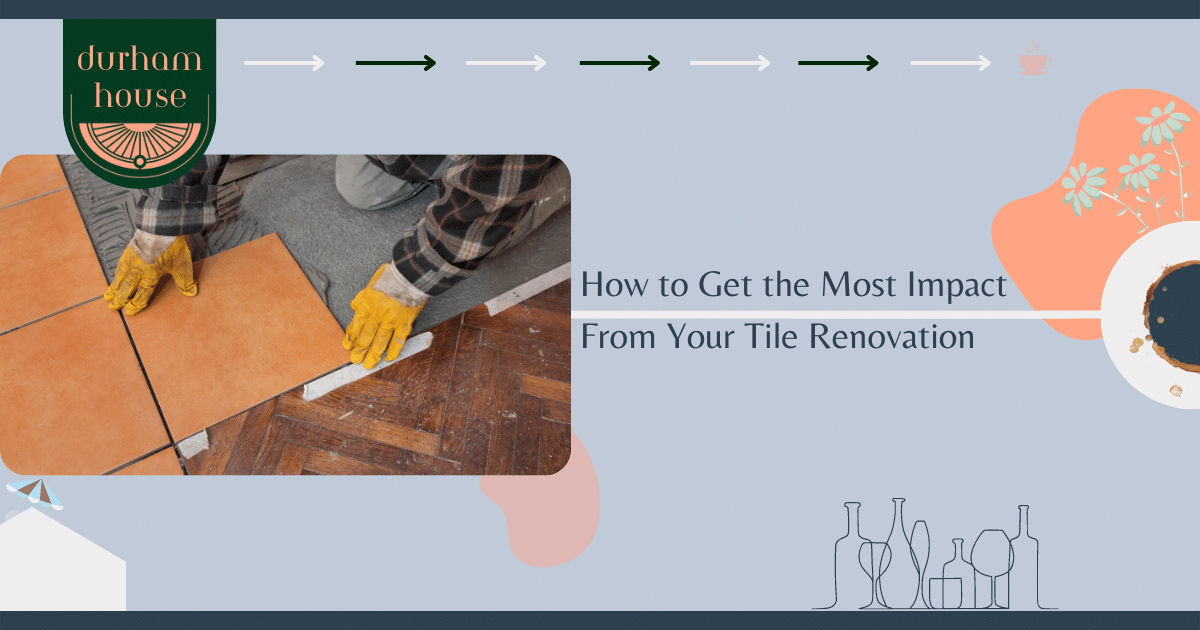Renovating your bathroom tiles may seem like a straightforward process at first glance. Like many other homeowners, you might think…” wow, this room is maybe 20 years old, styles have changed, and it’s getting stale. I’ve redone other rooms in the house, and now this bathroom sticks out like a sore thumb from decades past”. You may be ready to dive in all by yourself, eager to start ripping out the old toilet, basin, and tiles to transform your tiling. However, you need to ensure you have a solid plan in place before you get started.
Some crucial decisions will have to be made before you take your hammer to the walls. Nothing is cheap or straightforward in terms of home improvement, and nobody wants to spend more money than is optimal. Tiling experts, such as those at the local tile store VICTILES, recommend a little strategic planning before undertaking this job as a DIY project. Perhaps you can still do it and not break the bank, but be 100% sure that you know what lies ahead before you start de-constructing your walls.
Let’s take a look at three important items that need to be considered to ensure that you get the best impact from your next tile renovation project.
Understand Your Budget
How much money is left over after finishing the other rooms? Is it necessary for the bathroom to fall in line with those other design projects you’ve completed? Or is the bathroom and island unto itself in terms of design language? These are questions only you can answer, and they need your attention when it comes to setting your budget. Understanding the pros and cons of each type of tile costs only a fraction of your time and will return huge dividends down the road if you choose wisely. Remember that a beautifully modern bathroom or kitchen design doesn’t need to have a luxurious budget.
Porcelain Tiles
Porcelain tiles are stronger and less prone to cracks and wear over time. Prefer to use them within moist environments and where direct water contact is expected (bathroom, kitchen, etc.). Their absorption rate is only 0.5% due to their high-density construction from the 1,250-degree oven-firing process. Porcelain is also resistant to heat, scratching, and staining. Again these properties work not only for showers and tubs but also around the kitchen stove, sinks, and countertops. Cost-wise, this option is more expensive but not detrimentally so. You can achieve ambitious design goals with porcelain while coming in under budget.
Ceramic Tiles
Ceramic tiles are lighter, softer, and less dense. You can work with these and adapt them to your needs more easily than porcelain. Be aware the decreased density means they will absorb more water than porcelain. So ceramic is often a better option for that painted bathroom wall that sets away from the tub. You can use it to mount some shelves or perhaps a couple of towel racks. Ceramic tiles are also relatively cheap, easy to work with, and better suited for indoor applications to avoid cracking in cold temperatures.
Power Outlet Locations
One thing that many DIY customers run into is issues relating to tiling and power outlets. Are you currently satisfied with the outlet locations in your bathroom, or are you looking to improve upon the bathroom ergonomics? Perhaps you’d like to mount a flat-screen monitor to a wall. Maybe your sink basin currently has no outlets, and you plan to add a couple nearby. This new development can add some wrinkles to your tiling plans.
This certainly will affect the overall budget for the project since now you’re talking about having to cut into the drywall, have an electrician come in to run lines, and then patch over the walls once electrical work is complete. Now you have less of a budget to spend on tiles. So going into a project like tile renovations requires some serious introspection about what your overall goals for the room are.
Consult With a Professional To Get The Best Results Possible
Understanding those design nuances that may not have been as so obvious at the outset is important when it comes to getting the best return on your tile renovations. As you get deeper into the project, more questions arise, and decisions need to be made, which can have ramifications on many elements of the process. It’s important to seek out the information your need to ensure you achieve the best results possible, whether you are a complete newbie with a small budget or a professional home builder spending other peoples’ money.
With the right help, you can discover the newest styles and materials that can do for your design vision and needs. The pros can tell you what questions to ask yourself, then take an experience-based approach to find the answers you need before spending hard-earned money on raw materials and tools. Maximise every dollar spent by asking the right questions to the people who have the know-how and experience to ensure you get the best possible results the first time.





